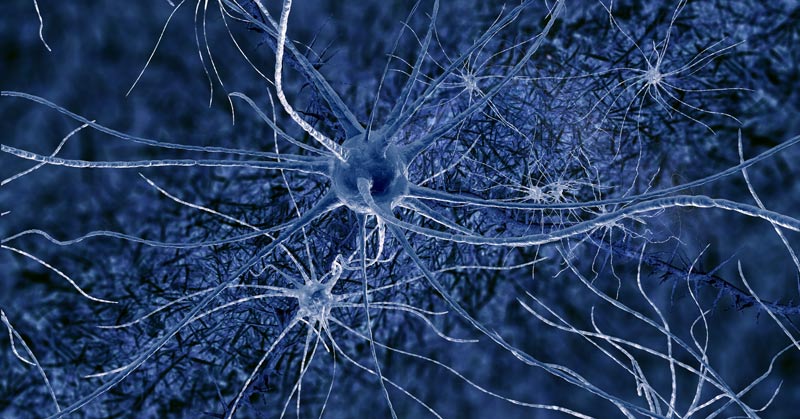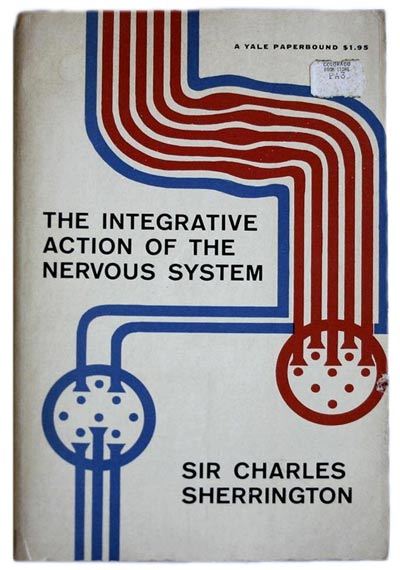
By Dan Fichter
We largely owe our knowledge of reflexes to Sir Charles Sherrington, who has become known as the “Father of the Nervous System.” His book, The Integrative Action of the Nervous System, circa 1901 was one of the first books written on the nervous system and our reflexes.
Our nervous system is a crazy, beautiful, array of neural chemical circuits. Two primal reflexes that have the greatest potential for problems relating to pain and human locomotion are the startle reflex and withdrawal reflex. A third, the protective joint reflex, is constantly influencing our attempts to relax muscles and increase ROM, which in turns allows us to move more freely. Do we ever try to address these fundamental human intricacies in our training programs?
What about the simple cross crawl concept we learn as babies. As we grow, we develop flawed movement, injuries, and reactions to stress; and lose our ability to move the way we were designed to move. I encourage traveling back to the basics and watch your athleticism increase before your eyes.
If we travel back to the basics and make sure we are in a relaxed state before we try to displace ourselves I think we will have a better output when moving explosively. Let me give you some basics. To understand the breadth and depth of the impact that reflex-driven training can have, let’s revisit the basics.
- Muscle strength and length is adequate
- Joints glide with a coefficient of friction similar to ice on ice
- Autonomic nervous system is in an anabolic state with parasympathetic influence
- Fascia moves normally
When these things are in place (addressed in warm up) the neuromuscular system is permitted to explode.
Let’s go back to even more basic equations of human movement. In order to move we need to relax and contract our muscular system in a specific order, time, and percentage of max to get the desired movement and outcome. For speed production, we have to relax antagonistic muscles to the same extent the agonist muscles drive us. In strength activities, we still have to do this with a little co-contraction to stabilize but nonetheless still have to relax in a certain order and time to facilitate the proper movement. Sounds pretty simple but do we train this and put our body in the correct position to be able to display this?
Think about this. When stress hits or you get upset, shoulders raise and neck muscles turn on to prevent the head from moving. Looks like a pattern when some people run. Hmm. When shoulders shrug, hips lock (something I learned from Charlie Francis). These are stress responses that become learned. I believe we can fix these responses or at least delay them to increase performance. Remember, in the sporting world, a little change can have a huge impact on performance.
In the sporting world, a little change can have a huge impact on performance. Share on XEach day I go to work I get to talk shop with some great Docs (Function Neurology Chiropractors) that understand the concepts of Neurology and how it is linked to great movement.
“Genuine speed and strength are valued attributes that become compromised when the brain prioritizes protection over performance. Returning the patient to a state where they can access the full capacity of the motor cortex for high-performing, uncompensated muscular movement should be the clinical goal.” – C. Robert Luckey
Working in conjunction with this type of therapy puts every athlete in a great position to get better!!!
At the Dec 11-12 Track-Football Activation Consortium, I will discuss the way we train the reflex system in our training, our warm up, and our therapy. Adding these simple steps to any program can help any athlete move more freely and delay the onset of fatigue.
In addition to training the reflex system, I will make a presentation on Douglas Heel’s “Be-Activated”.
A friend in France introduced me to South Africa’s Douglas Heel. I traveled to London in 2010 to learn from him after reading about him. What a great experience. Douglas made me feel welcome and was intrigued why I would travel so far just to see him.
When I returned from London, I brought Douglas Heel to New York. I introduced Douglas to our Docs at my gym/clinic. He taught us so much and was so interesting. I also introduced him to Chris Korfist. The rest is history I guess.
I’m glad Doug has been able to help people here in the states and share his belief system. It’s very powerful stuff. I use something of his every day! I owe a lot to him for influencing the direction of my research. Chris has been a long-time friend and great business partner. We met years ago and have stayed close. Chris shares the same passion for getting people faster, but more importantly he has been a true friend who’s helped me in so many different areas.
Dan Fichter will make three presentations at the Dec 11-12 Track-Football Activation Consortium.
Purchase tickets here.
Please share so others may benefit.
[mashshare]


